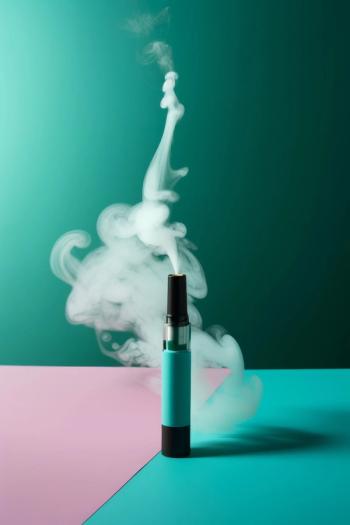
Cannabis Science and Technology
- September 2021
- Volume 4
- Issue 7
An Essential Element for Commercial Cannabis and Hemp Manufacturing: Practical Cleaning Solutions for Extraction and Processing Equipment
This article proposes alternative and effective cleaning solutions for cannabis and hemp processing equipment.
This article proposes alternative and effective cleaning solutions for cannabis and hemp processing equipment using detergents commonly used in pharmaceutical cleaning applications to maintain the quality of safety of the drug product and integrity of the equipment. This approach would eliminate the need for cleaning with ethanol which, when used at a large scale, has numerous limitations including storage, flammability concerns, and waste handling.
The Cannabis and hemp industries are evolving at a record pace as innovations and consumer expectations have led to changes in the manufacturing environment. Extraction processes are becoming increasingly prevalent in cannabis manufacturing operations as “users prefer to consume tetrahydrocannabinol (THC) via derivatives rather than smoking dried flower. Derivative products include oils, capsules, topicals, sprays, concentrates, vapes, edibles, and infused beverages” (1). As derivative product demand increases for desirable oral dosage and edible forms, manufacturing operation capacity is often increased by adopting equipment and processes from traditional pharmaceutical manufacturing such as formulation vessels, high shear agglomeration, tablet coating, and fluid bed granulation and coating equipment in addition to the extraction equipment.
Although cannabis manufacturing has advanced, equipment cleaning processes have lagged. The focus has been on scale-up of the manufacturing process and testing as the market retail sales estimates are projected to top $25.0–30.4 billion in the United States alone by 2023 (2). Cannabis and hemp extraction present various contamination control issues and cleaning challenges resulting from plant biomass, waxes, and extracts. When cleaning processes are not optimized before scale-up, equipment cleaning may take significantly more time and resources than originally planned, possibly impacting the manufacturing schedule. Unfortunately, equipment cleaning, often considered a necessary evil, is not thought about until there is an issue.
Ineffective cleaning could also lead to lost batches and product recalls due to microbial contamination and adulteration of product from pesticides, solvents, and heavy metals. Pesticide residue not only lingers in soil and plants, but can also linger in extraction equipment (3). Biomass contaminated with bacteria, pesticides, or other contaminants could conceivably find its way into regulated infused products that use cannabis oils extracted from raw materials, which are ultimately ingested or administered topically, exposing consumers to yet another health threat (4). It is important to consider all contamination sources, whether it is introduced through raw materials or process residue when assessing the cleaning process.
The use of ethanol (EtOH) has been the standard for cleaning cannabis extraction equipment since this may have been used in the manufacturing process, recommended by the equipment manufacturer, or was used to clean the product during small-scale development. Cleaning with ethanol may be ideal for small-scale cleaning; however, it is not suited for large-scale cleaning. Ethanol has a flashpoint of 55 °F (13 °C), which is the lowest temperature volatile organic compounds (VOCs) are emitted and will ignite. According to a document from the California EPA's Department of Toxic Substances Control and U.S. Environmental Protection Agency (5), “Most of the solvents used for cleaning are classified as VOCs which contribute to photochemical smog, and many are considered toxic as well.” Reducing ethanol by eliminating the use for cleaning lowers the risk of explosion, storage, and disposal concerns.
Because of the low flashpoint, EtOH is considered flammable; thus, large quantities of stored EtOH results in Class 1, Division 1 (C1D1) hazardous location designation. Class 1, Division 1 designation requires construction and equipment to meet National Fire Protection Association (NFPA) Publication 70, National Electric Code (NEC) environmental control measures. Requirements may include but are not limited to having greater than six room air changes per hour and explosion-proof equipment, which may add substantial costs to a new-build or expansion project.
Once large EtOH quantities are used for cleaning, the spent solution must be recycled or treated as hazardous waste. In addition to the expense associated with disposal, which was estimated at the time of this article to total approximately $2/gallon, reducing solvent waste has been one of the most important elements of pollution prevention programs nationwide (6).
As an alternative, formulated detergents commonly used to clean pharmaceutical, dietary supplement, and cosmetic manufacturing equipment were investigated as a low VOC, low toxicity option for cleaning cannabis and hemp extraction and process equipment.
The term formulated detergent is commonly used to describe an aqueous-based cleaner having functional components to enhance certain mechanisms of a solution over water, solvents, or commodity cleaning agents such as sodium hydroxide alone. Because of their composition, formulated or pharmaceutical grade detergents may be more effective in cleaning a broader range of soils and products encountered in manufacturing. Certain characteristics are considered when formulating, such as analytical detection, rinsability, material compatibility, sustainability, antimicrobial effectiveness, and foam characteristics. In Validated Cleaning Technologies for Pharmaceutical Manufacturing (7), LeBlanc stated “While the cost as purchased per kilogram may be higher for the formulated cleaner, the overall process cost may be less due to time savings.”
Some progressive equipment manufacturers incorporate the ability to use formulated detergents into their equipment, such as Precision Extractions Solutions KPD Series Vulcan Industrial Extractors, which integrate a clean-in-place (CIP) skid into the extraction equipment. The skid is fitted with tanks for alkaline and acid formulated detergents as well as a reuse tank. Automated CIP systems allow for standardized cleaning processes rather than variable manual processes.
A direct comparison was performed at a large cannabis manufacturing site where decarboxylated material was manually cleaned from equipment surfaces using ethanol. The cleaning process required an entire 8-hour shift to clean and at least two operators to perform the manual process. Stainless steel test surface coupons were prepared by coating with the product and exposing coated coupons to the same temperature and conditions as the equipment to prepare a soiled surface reflective of the manufacturing process (Figure 1). Coupons were then manually cleaned by either wiping with ethanol and rinsing with purified water or wiping with 1% formulated alkaline detergent at ambient temperature, followed by a rinse with purified water.
Coupons cleaned with ethanol and purified water displayed visible residue (Figure 2), where the coupon cleaned using formulated alkaline detergent was visibly clean (Figure 3). After a cleaning process, visual failures may lead to corrosion issues in stainless steel equipment and eventually microbial failures. Proper cleaning will minimize many common problems, including clogged lines or valves, poor separation, and low yield. If the same extractor is used to run multiple strains (such as high CBD strains and high THC strains), it is best to thoroughly clean in between extraction runs to minimize cross-contamination (8).
A dilemma facing cannabis and hemp manufacturing sites is the extended cleaning time when using a solvent system for equipment cleaning. As shown in the previous example, the use of ethanol was not effective in completely removing the residue. In moving to formulated detergents for equipment cleaning, the end-user was able to clean in a fraction of the time. Cleaning process optimization through laboratory studies to eliminate visual failures and reduce lengthy cleaning processes is described in the following case study.
Case Study 1
A large cannabis manufacturer reported consistent visual failures as well as long cleaning times. Laboratory testing of the final product, crude extract, and decarb (herb material and biomass) material was performed at the site (Figure 4). In addition to improving the cleaning results, the site also wanted to replace ethanol with a safer, more efficient alternative.
All coupons were coated and air-dried at ambient temperature for 16 hours to simulate manufacturing dirty hold time conditions. Cleaning parameters were identified by testing various conditions through agitated immersion. A 1% v/v cleaning solution of formulated NaOH-based alkaline detergent containing sodium hydroxide at 45 °C for 20 min cleaned the final product and crude extract; however, the decarb (biomass) residue required the addition of a
detergent additive.
Comparative testing was performed on the crude product using ethanol, the manufacturing site’s current cleaning product, and a formulated alkaline detergent. The use of ethanol resulted in a significant cleaning failure, as observed on the center coupon versus passing results for the formulated alkaline detergent (Figure 5). The image on the left in Figure 5 represents crude extract material residue, the center image represents post-ethanol cleaning results, and the image on the right represents post-cleaning results using 1% v/v solution of formulated alkaline detergent containing sodium hydroxide at 45 °C for 20 min. Switching to formulated cleaners resulted in reducing the overall cleaning time and better control over their cleaning.
Case Study 2
One of the top 10 cannabis drug manufacturers in the world wanted to determine the optimal cleaning parameters for their active pharmaceutical ingredient (API) and oil carrier excipient removal. The site visit included a laboratory-scale study (9) and an at-scale cleaning trial for a 1000 L soiled formulation vessel with a 35 L in-line API addition tank. The current cleaner, ethanol, used in the pilot-scale production area, was not scalable due to safety considerations and high disposal costs.
A laboratory evaluation was performed at the customer site (10). Coupons were coated and air-dried for 16 hours, then cleaned by agitated immersion and manual cleaning. As recommended, alkaline detergent was evaluated (we have generally recommended the same detergent for the cannabis market as it could serve as a cleaner and disinfectant) and proved effective across the board. It was recommended to use a 1% v/v alkaline detergent at 60 °C for 10 min or 2% v/v alkaline detergent at 45 °C for 10 min.
The customer developed a specific wash cycle that removed the residue from the API in the formulation tank with assistance. The site considered cleaning the API vessel out of place or use the CIP skid and connect directly to the CIP system and clean automatically using a recommended cleaning procedure. The 3% v/v alkaline detergent at 60 °C for a minimum of 10 min was recommended to clean the API vessel effectively. The 3% v/v alkaline detergent was recommended for cleaning because the decarboxylation tank has a baking step at more than 170 °C for 2 hours, creating a more challenging soil.
The field trial helped the customer drastically improve the API and formulation tank’s appearance and provide supporting data to replace ethanol as the cleaning agent for production equipment. Minor adjustments had to be made by the customer to finalize the cleaning procedure with recommended detergent.
Critical Parameters for Cleaning
Critical cleaning parameters have been well defined in the literature and include: time, action, cleaning chemistry, concentration, temperature, water quality, surface, soil load and condition, and environmental factors. Laboratory testing has effectively defined critical cleaning parameters for removing process residues such as cannabis (11). Laboratory testing involves applying the residue on a surface that is representative of the cannabis residues. The test continues by conditioning the applied residue on a surface to simulate the “real world” process and finally cleaning the surface to represent how the equipment is normally cleaned within the facility. Laboratory testing is described in Table I, and the acceptance criteria are described in the sidebar titled “Acceptance Criteria Used in Laboratory Testing” (12). The various cleaning factors to monitor during the laboratory testing include cleaning agent, temperature, time, action, water quality, surface material, rinsing method, and environmental factors.
Ethanol is commonly used as the cleaning agent for removing cannabis residues from the surface. Ethanol cleaning utilizes the cleaning mechanism of solubility. Solubility is defined as the dissolution of one contaminant in the liquid solvent. If more than one contaminant present in the residue needs to be cleaned, then one contaminant might have a different solubility profile than another contaminant in the mix.
There are many disadvantages associated with using solvents such as ethanol. There are safety and environmental concerns such as flammability and volatile organic compound emissions, which make using these solvents undesirable.
Issues with solvents include the cost as solvents are used “as is” (7), whereas formulated cleaners may be very effective at relatively low use dilutions, for example, 1–5% v/v. When a formulated cleaning agent is used, the cleaning mechanisms to remove the residue from the surface include solubility in an aqueous solution, wetting, emulsification, dispersion, chelation, and hydrolysis. These additional cleaning mechanisms are important in removing water-insoluble residue from the surface.
Conclusion
A recent article in Cleanroom Technology pointed to the adoption of pharmaceutical technology for safer medicinal cannabis and stated “history has shown that ill-advised manufacturing controls lead to unknown risk, late-stage market failure, and crippling penalties” (13). Elimination of ethanol for cleaning cannabis extraction equipment minimizes safety, storage, and disposal concerns. Formulated detergents, commonly used in pharmaceutical manufacturing cleaning processes, should improve cannabis and hemp equipment cleaning operations by decreasing cleaning time using efficient cleaning chemistries better suited to large-scale operations, where good manufacturing practices are required.
References
- S. Williams, "The Most Important Marijuana Growth Chart You'll Ever See," Motley Fool. (2019, June 23).
- Marijuana Business Daily, Marijuana Business Factbook (2019).
- A.C. Lewis, "Inside the Weird and Wild Crusade for Clean Pot," Rolling Stone (2018, March 01).
- R. Meagher, "The Cannabis Industry's Tylenol Moment, A Solution is Complicated and a Wrong Turn Could Be Fatal," Cannabis Business Executive (2019, October 24).
- California EPA's Department of Toxic Substances Control and U.S. Environmental Protection Agency Region IX. (2011). Safer Alternatives for the Chemical, Pharmaceutical, and Biotechnology Industries. U.S. Environmental Protection Agency.
- United States Environmental Protection Agency. (1994). Federal Facility Pollution Prevention . Washington DC: US EPA.
- D. LeBlanc, Validated Cleaning Technologies for Pharmaceutical Manufacturing (CRC Press LLC, Boca Raton, Florida, 2000).
- R.D. Loeber, "4 Tips for Cannabis Extraction Equipment Cleaning and Maintenance," Cannabis Business Times (2019).
- STERIS Corp. Cleaning Cannabis and Cannabis Derived Product Residue, Case History 3618. Technical Services. Mentor: STERIS Corp (2020).
- STERIS Corp. What is the PACE Evaluation (2013).
- D.A.Hadziselimovic, Journal of GXP Compliance, 32-38 (2012).
- G.L. Fourman, Pharmaceutical Technology 17(4), 54-60 (1993).
- M. Walleser, "Adopting cleanroom technolgoy for safer medicinal cannabis" Cleanroom Technology (2019).
- A. Beadle, "Advances in Cannabis Extraction Techniques," Analytical Cannabis (2019).
- O. Van Houtte, P. Lopolito, and M. Dion, Pharmaceutical Engineering, 109-117 (2015).
About the Authors
BETH KROEGER-FAHNESTOCK and DIJANA HADZISELIMOVIC are with STERIS Life Sciences.
Direct correspondence to:
How to Cite this Article
B. Kroeger-Fahnestock and D. Hadziselimovic, Cannabis Science and Technology 4(7), 30-35 (2021).
Articles in this issue
over 4 years ago
Cannabis and Hemp Tableting Challengesover 4 years ago
Does Light Spectrum Alter Plant Transpiration Rates?Newsletter
Unlock the latest breakthroughs in cannabis science—subscribe now to get expert insights, research, and industry updates delivered to your inbox.




